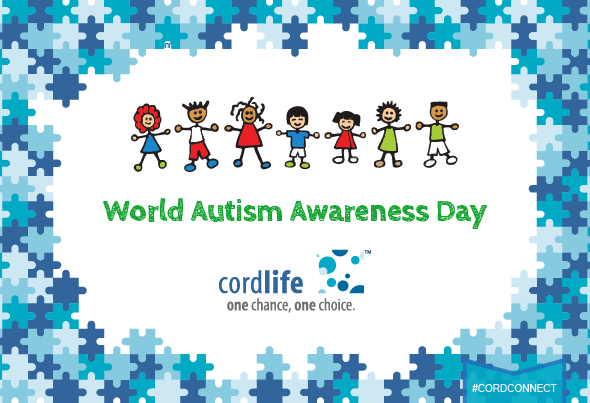Table of Contents
Research increasingly points to a correlation between cord blood cells and their application in treating neurologic diseases. Can cord blood cells treat autism?
Children on the Autism spectrum often exhibit varying kinds of hypo- and hyperactivity. While some are withdrawn and uncommunicative, others are unable to read verbal cues in communication and respond appropriately. Still others exhibit a ‘static intelligence’ that helps them excel at studies but not at simple tasks or games requiring hand-eye coordination.
Parents and caregivers do all they can to help Autistic children, but it is a hard challenge, such as that faced by a Mumbai-based senior citizen who not only provided medical care and therapy but also set up a school for her Autistic grandson[1]. There is no known cure yet for Autism and allied disorders.
A neural deficit in the brain forms the basis for all of these ‘disconnections’ in behaviour and speech; those with Autism disorders exhibit lower processing abilities and an inability to process multiple points of information simultaneously.[2]At present, there is no known cure for Autism Spectrum Disorders (ASD), while therapy and lessons aimed at improving cognitive and communicative functions can help to improve matters.
However, there are great strides being taken in the field of stem cell research and therapy in bridging the gap between neural deficits, as also cardiovascular, endocrine and orthopaedic ones. Regenerative medicine therapy holds great promise for individuals on the Autism spectrum since embryonic stem cells and non-embryonic stem cells sourced from the umbilical cord blood, adipose tissue and bone marrow may further be used in a breakthrough treatment for ASD. The pluripotent stem cells found from these three sources are present in multiple amounts, of which cord blood cells are the most capable of generating epithelial, hematopoietic and neural tissues.[3]
Doctors and researchers feel that cord blood stem cells may fire the brain’s neural activity and also go a step ahead to generate new neural connections. This is a breakthrough finding that can help Autistic children improve their motor and cognitive skills, among others. Several clinical trials and researchers point to the applications of stem cells derived from cord blood to help in eliminating immune problems in Autistic children.[4]
If stem cells derived from one’s own cord blood may help in regenerative medicine and therapy at a later stage of life, it naturally follows that parents must opt to bank their babies’ cord blood for future use.
It is World Autism Awareness Day today, April 2. As a parent, you may be able to provide the best of material comforts to your child. But consider this: if your child exhibits symptoms of Autistic disorders at a later stage, would you be able to help him with physical therapies alone? As doctors around the world look for a cure for Autism, it is time for parents to give their children a shot at a new life with the disorder – it is time to bank their cord blood for use in the future.
[1] ‘Gritty granny gives her all to help autistic grandson’, by Vinod Kumar Menon, Mid Day, April 2,2015 http://www.mid-day.com/articles/world-autism-day-gritty-granny-gives-her-all-to-help-autistic-grandson/16107195
[2] ‘He talks of aircrafts but doesn’t understand relationships’, by Kamini Lakhani, Sai Connections, January 21, 2015,
[3] ‘The potential of cord blood stem cells for use in regenerative medicine’, by David Harris, Michael Badowski, Nafees Ahmad and Mohamed Gabella, Expert Opinion on Biological Therapy, 2007
[4] Marcus, Mary Brophy, ‘Could stem cells treat autism? Newly approved study may tell’, HealthDay News, October 12, 2012
